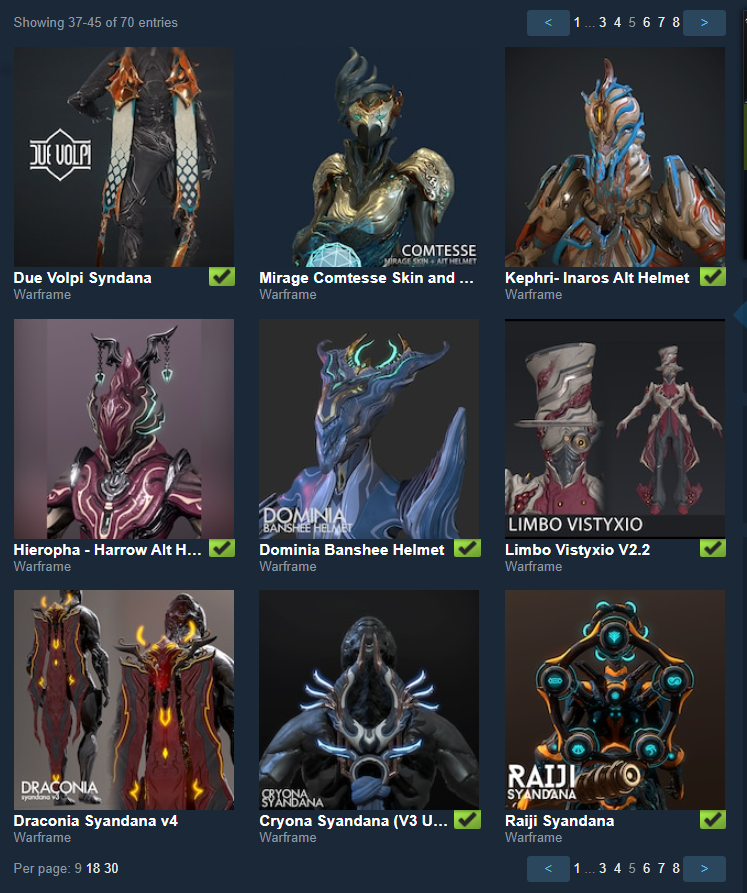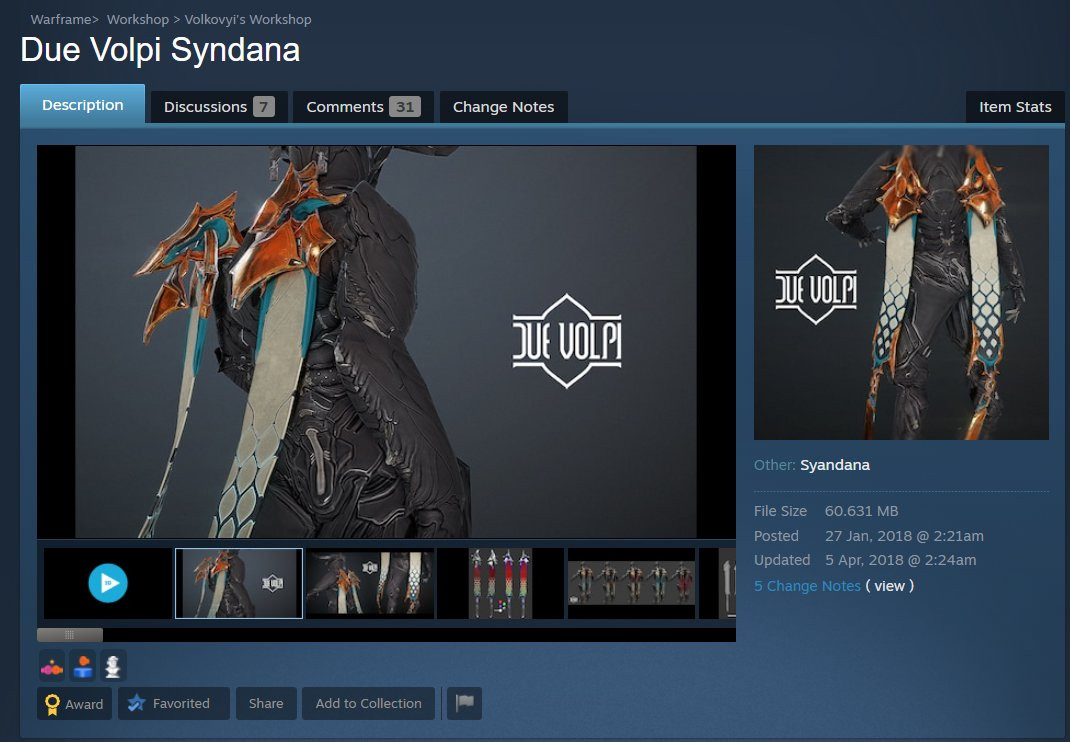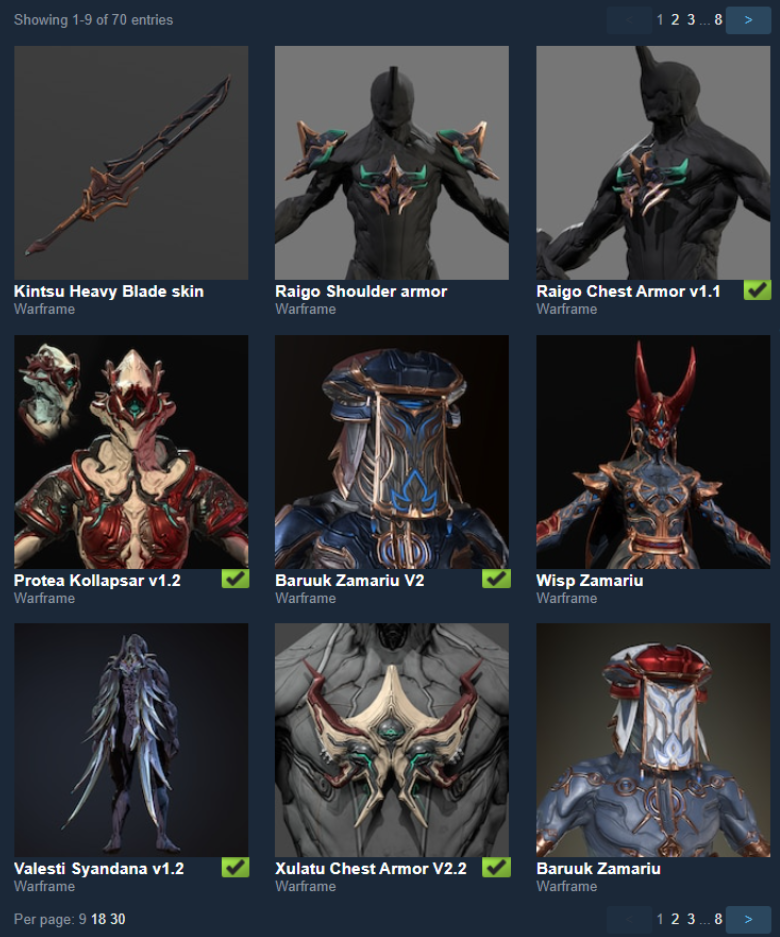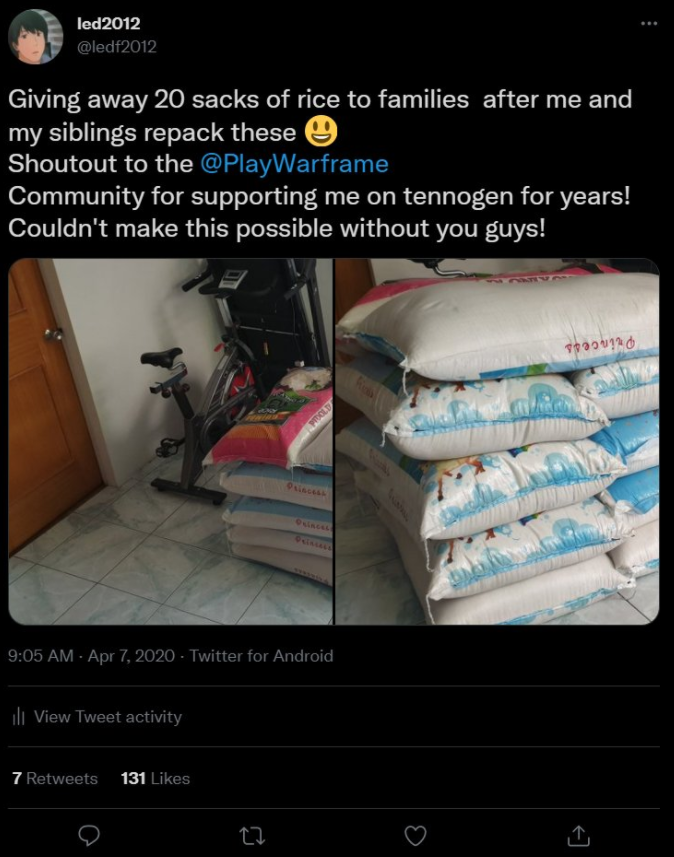This artist funded his sister's degree and added a floor to his parents' house with Warframe skins
Filipino artist Lendel Fajardo left college, learned to use Blender, and now supports his family with videogame skins.

Digital Extremes' Warframe is a live service game which makes money largely through cosmetics, and part of its success has come from the studio's willingness to embrace all forms of fan expression, whether that's guides or incredible 3D art. In 2015, it started a program called TennoGen, where artists can submit cosmetic designs for consideration to be included in the game. If the work makes it, the artist gets a 30% cut of sales.
Similar programs have been criticized alongside the practice of soliciting 'spec' work in creative industries, which is when work from artists is requested by a company but only paid for if it's used. For creators who find success with revenue sharing programs like TennoGen, though, being an independent videogame item designer can result in a life-changing amount of money. Lendel Fajardo, who goes by the handle LED2012 online, is one of those creators.
Fajardo, who lives in the Philippines with his parents and siblings, spoke to PC Gamer via DM. "I started doing this since the very first round, announced Nov 2015, but on my first try, I didn't get in. I was familiar with paid stuff from Dota 2 Steam Workshop before and there were some internet conversations about it being lucrative so I didn't [give] up, reworked and focused on one of my items and eventually got picked on the second round."

Fajardo had no formal training in the field of 3D art, but he had a hunger to learn.
"After my first, I wanted to do more so I kept trying," he writes. "I have no educational background on 3D art, nothing, I just started reading and watching some tutorials on the processes in making 3D assets. I kept trying but I couldn't seem to handle how to properly design helmets and full skins so I focused more on Syandanas [the capes that Warframes wear], with my second item the Maharliqa, kinda inspired by the Philippine flag."
Fajardo wasn't a complete neophyte: He dropped out of college while studying front and backend web design, and it was there he was introduced to free open source 3D modelling software Blender, and learned that it's possible to create professional 3D art without investing in the expensive software many big game studios use.
Once he started getting some Warframe cosmetics into the game, Fajardo used the money to upgrade his PC "from some ancient desktop" that barely ran Blender to a "decent laptop that can handle some games and 3D work."
Keep up to date with the most important stories and the best deals, as picked by the PC Gamer team.

Fajardo and his family were "running out of money" at the time, he says, with his mom, a nurse, providing for him and three other siblings. "I had to make a move," he writes, and before he stopped going to college, he started taking small design and motion graphics jobs. Ultimately, though, it would be Warframe cosmetics that allowed Fajardo to upgrade more than his PC.
As one example, Fajardo says that his Warframe item sales funded his sister's degree in medical technology, which she completed last year.
And my sister's grad pics after a year 😅I was able to fund her studies all thanks to the warframe tennogen program 🥰 pic.twitter.com/lf6eUlDtL1August 18, 2021
Success didn't come right away, though. Many of Fajardo's earlier Warframe submissions were rejected.
"I think I've already set some of [my older work] to private," he writes, referencing the art shown below. "Some are really just put together for the sake of submitting, I was so bad at designing stuff."

What Fajardo found made the difference was two things: collaborators, and feedback from Digital Extremes. Below is an example of some of his more recent work.
The Raiji Syandana item "was inspired by the backpiece of Raijin, the Japanese thunder god," Fajardo say, and sold well after small changes based on feedback from the Digital Extremes art team. Cryona Syandana was also accepted following feedback.
After that, Fajardo started seeking out collaborators. The Limbo skin below (with the top hat) was made with artist Hydroxate.


Due Volpi, below, was conceptualized by Volkovyi/Liger Inuzuka, who now works directly with Digital Extremes making "beautiful deluxe skins," says Fajardo, so they're no longer able to collaborate.

The collaborations kept on coming, though. Fajardo also worked with Daemonstar: "He does cool Warframe fan arts and fan concepts so I decided to contact him in the forums."
The pair had three Syndanas outfits accepted in one round, and Fajardo had one more suit accepted as a collaboration with Filipino artist Jaeon009.
"These were my biggest rounds I think, especially with the Sildarg Syandana," he says. "Players loved it! Daemonstar really pushed what we could do with the technical and aesthetic rules that DE set for creating TennoGen. I thought I couldn't handle it but it worked fine in the end."
Fajardo not only started making a living from Warframe, but at a certain point made enough to fund major changes for his family, paying to renovate his parents' two bedroom house, which he, his parents, and his siblings all share, adding another floor with three bedrooms and a bathroom.
"I was earning ten times, sometimes even more, than what my mom earns (as a nurse! They're really not paid enough for how stressful and dangerous their work is!), so now I just handle the expenses in the house," he writes. "Electricity bills, water, internet, weekly food, monthly groceries and all the university expenses of my sister, and my high school brother's expenses."

He still lives with his family, but Fajardo also bought a condo for himself and another "for rentals or for selling in the future." He says he purchased land from his aunt, as well, "and some other land outside the city," all off that 30% cut.
Fajardo's Warframe skins also paid for food donated to locals who needed it during the Covid-19 pandemic.
"Crazy year, sudden lockdowns, and quarantines and most of the neighbors are out of money, out of jobs and the local government's plan for the food just wasn't there yet, so when my mom approached me about giving food to the neighbours I just agreed and arranged it immediately," he writes. "I think it was specifically one neighbour begging for food. A few kilos of rice per person wasn't enough but it helps while we all wait for the local govt. We aren't living in some big subdivisions so we're pretty much still in the lower-middle class area just with a bigger house."

Fajado recently had his first solo skins accepted (the Protea Kollapsar Sentient skin) and has a collaboration with his brother (the Raigo chest armor).
"I think if I just gave up four, five-to-six years ago on Warframe, me and my family would be starving during the pandemic," writes Fajardo. "I am grateful to all the players who kept supporting me and my collaborator's creations and for the DE art team for believing in us and pushing our work so it could be in its best form."
And the future? "More collaborations, more rejected items but I'm certain that I've grown and learned a lot from creating stuff for Warframe. Their feedback has been super helpful for steering us into a better direction. I'm so grateful to Warframe and to Digital Extremes for the game and for the TennoGen program, it gave me a direction, a path even after the downward spiral that I faced."
Fajardo hopes to eventually get a job in the industry. His elder brother also left college to learn the ways of skin-making, and his younger brother is in senior school, which Fajardo also pays for. After graduating from college last year, his sister must next take her Medtech Licensure exam, which was postponed due to Covid-19.
"I just don't want my youngest sibling or any of them to experience what I've experienced with the lack of funds and all the stress that comes with it," he says. "So I usually just pay for the whole school year expenses and ask not much of them, just pass and know what they really want to do for their careers in the future."
And as for Warframe: "Whenever I see someone wearing my Syandanas, whether hanging out in the relay or I'm playing a mission with them in a squad, there's just that crazy, happy feeling that's reminiscent of the first time I saw my first work in-game. And feeling extremely grateful for them for supporting me."

Rich is a games journalist with 15 years' experience, beginning his career on Edge magazine before working for a wide range of outlets, including Ars Technica, Eurogamer, GamesRadar+, Gamespot, the Guardian, IGN, the New Statesman, Polygon, and Vice. He was the editor of Kotaku UK, the UK arm of Kotaku, for three years before joining PC Gamer. He is the author of a Brief History of Video Games, a full history of the medium, which the Midwest Book Review described as "[a] must-read for serious minded game historians and curious video game connoisseurs alike."

